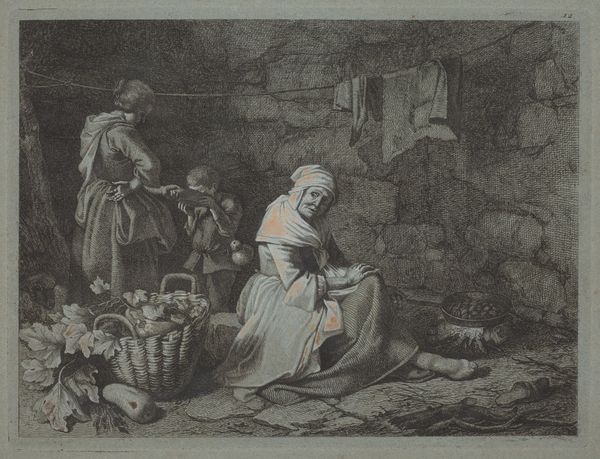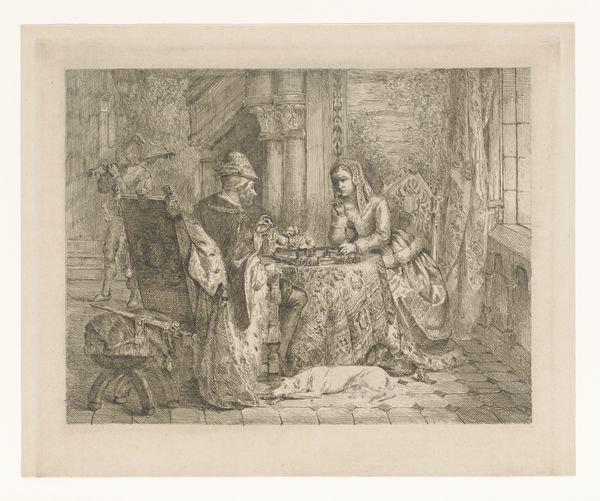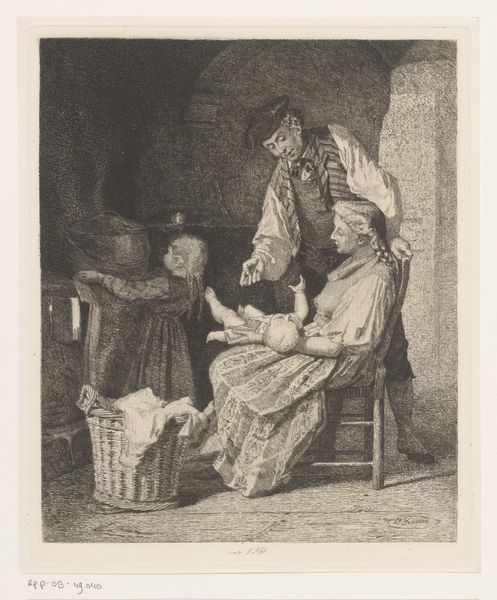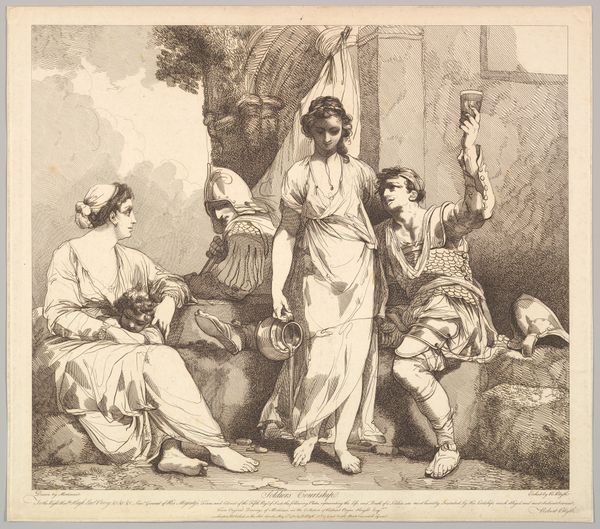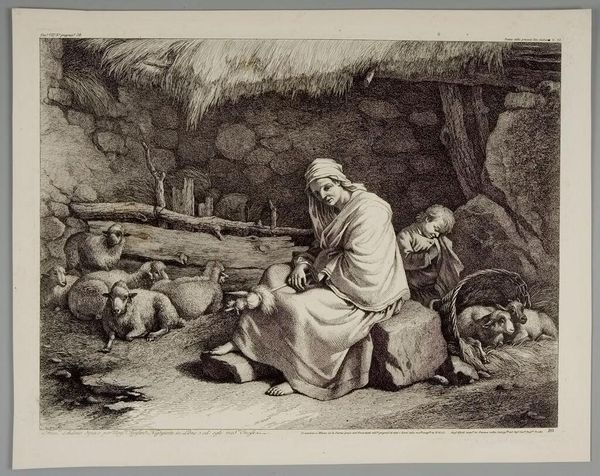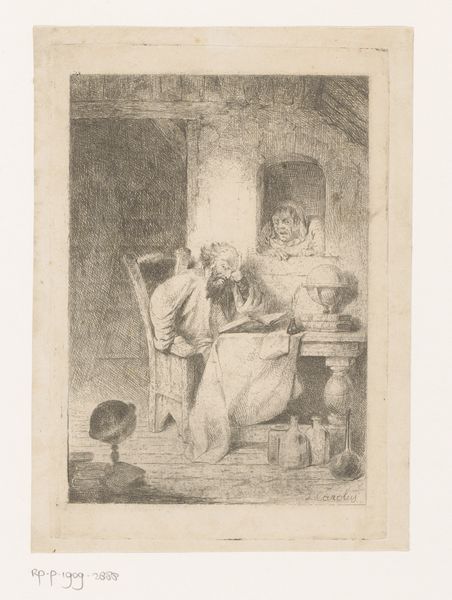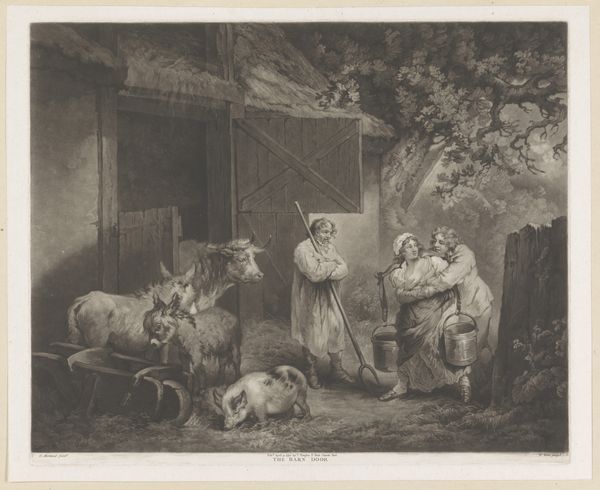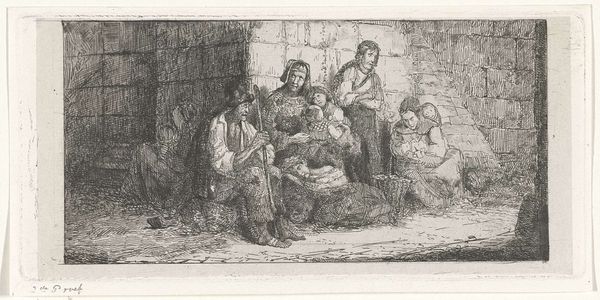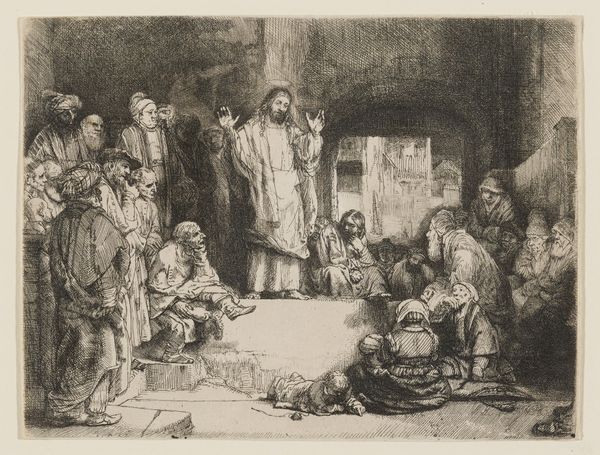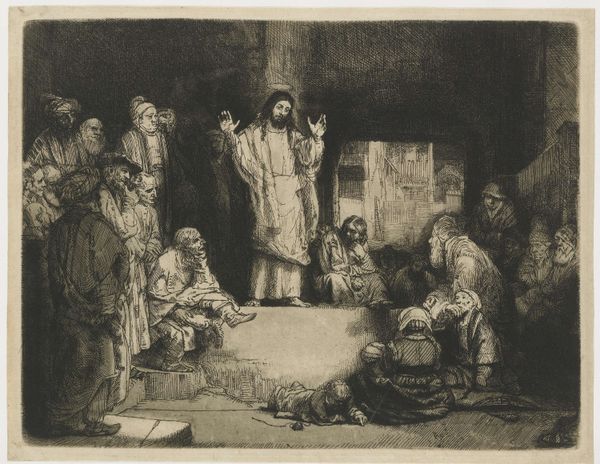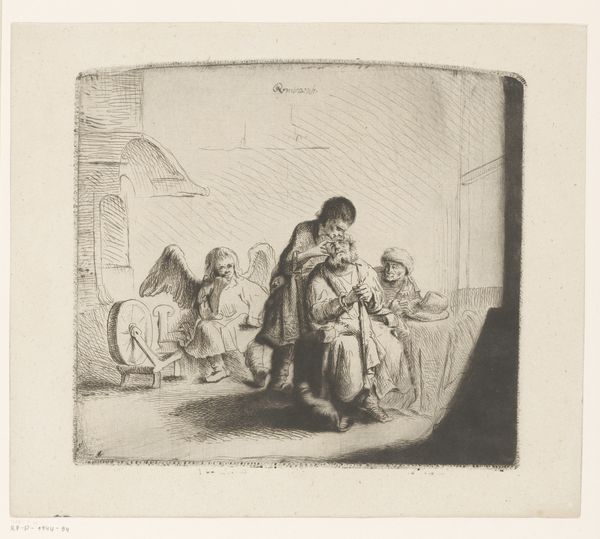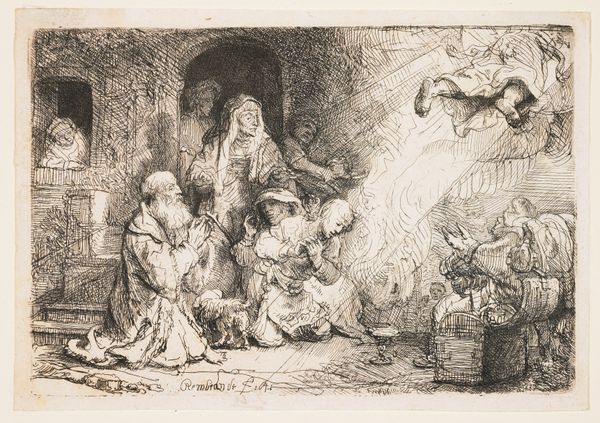![Market in Tangiers [Mercato di Tangeri] by E. Tommasi](/_next/image?url=https%3A%2F%2Fd2w8kbdekdi1gv.cloudfront.net%2FeyJidWNrZXQiOiAiYXJ0ZXJhLWltYWdlcy1idWNrZXQiLCAia2V5IjogImFydHdvcmtzLzVjNDZkOGJjLTc2MDQtNGM4MS05OGEzLTkzZjI3YWYxYzcxZS81YzQ2ZDhiYy03NjA0LTRjODEtOThhMy05M2YyN2FmMWM3MWVfZnVsbC5qcGciLCAiZWRpdHMiOiB7InJlc2l6ZSI6IHsid2lkdGgiOiAxOTIwLCAiaGVpZ2h0IjogMTkyMCwgImZpdCI6ICJpbnNpZGUifX19&w=3840&q=75)
drawing, print, etching, engraving
#
portrait
#
drawing
# print
#
etching
#
figuration
#
pencil drawing
#
islamic-art
#
genre-painting
#
engraving
Dimensions: sheet: 33.5 × 48 cm (13 3/16 × 18 7/8 in.) plate: 20 × 28 cm (7 7/8 × 11 in.)
Copyright: National Gallery of Art: CC0 1.0
This etching by E. Tommasi captures a market scene in Tangiers. Observe the veiled women, their forms echoing the rounded shapes of the pottery. The veil, a prominent motif, speaks volumes. Historically, it signifies modesty, protection, and cultural identity. Consider how the veil appears in other epochs. We can trace its evolution from ancient Near Eastern customs to Byzantine iconography, where veiled figures denoted sanctity. Subconsciously, it may evoke a sense of mystery, concealment, and the unknown. This visual echo has been passed down through time, shifting in meaning, yet retaining a primal connection to ideas of purity and separation. The women’s somber expressions, juxtaposed with the commerce of the market, engage us on a deep level. It underscores the emotional weight and the complexities of cultural memory embedded in the symbols that surround them. The veil, like the wares offered, is not merely an object, but a powerful force that shapes the narrative and our perception. In its non-linear progression, it resurfaces, evolves, and takes on new meanings in different historical contexts.
Comments
No comments
Be the first to comment and join the conversation on the ultimate creative platform.
